Simulated Racer: 2024 season recap
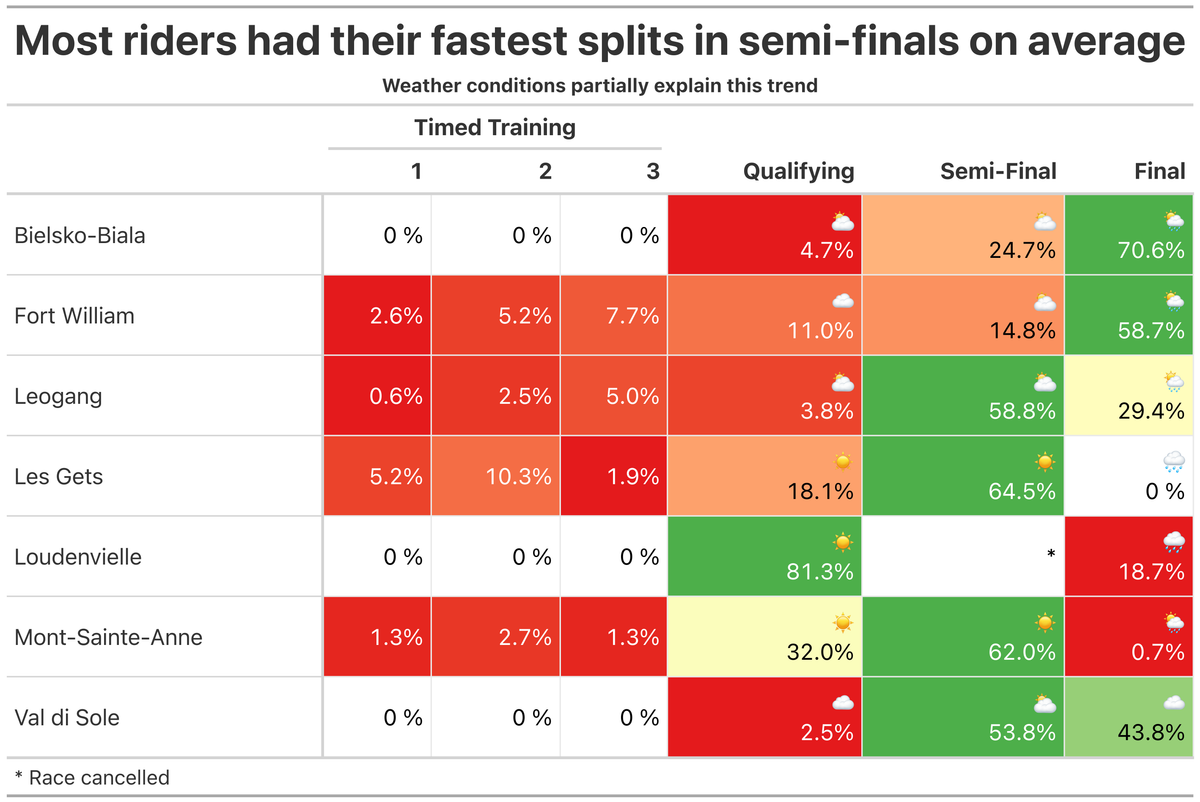
Intro
The 2024 downhill World Cup race results don’t lie. Loic Bruni was the fastest elite man of 2024. Period. When up against the clock, on average, he pieced together the fastest number of runs in the series.
But, it is interesting to ask: who didn’t piece it together? Who showed great raw speed and potential, but just wasn’t able to put it all together when up against the clock? Might these riders be a good bet for the coming season? To answer these questions, and more, we can simulate how a rider might have performed based on their observed performance.
Simulation
In the 2024 season, each event was broken into five timed sections: four splits and a finish. Riders' times were recorded up to six times, including three practice runs, qualifying, semi-finals, and finals, depending on their progress in the competition. This means that for any given event, we can take the fastest section times available for each rider across the event, and combine them together to simulate what could have been their fastest race run. For example, Let’s look at Luca Shaw’s results from Les Gets:
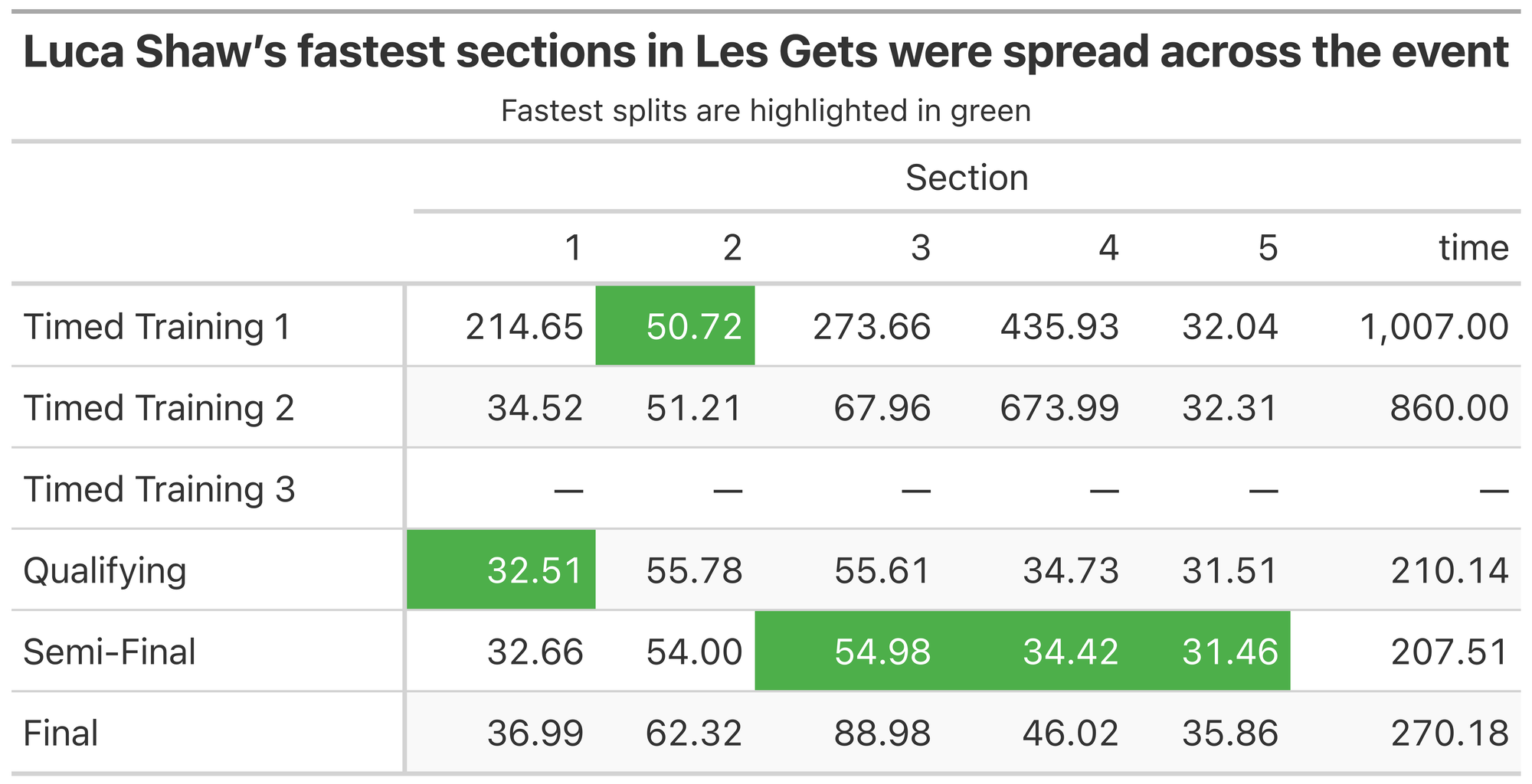
Here, we can see that his fastest section times were split across timed training, qualifying, and semi-finals. The fastest complete time he actually achieved at Les Gets was 207.51 (during semi-finals). If we simulate his fastest possible run using his fastest section times from across the event, he could have achieved a time of 204.07, over three seconds faster. Where might that have placed him? How would it have affected the overall? Were his best splits as good as his competitors?
How many riders could have improved upon their fastest run time?
Luca wasn’t the only rider to leave the time on the track. Comparing each elite male riders fastest actual run of each race versus their simulated fastest run, we can see that on average, 56.4% of riders could have gone faster:
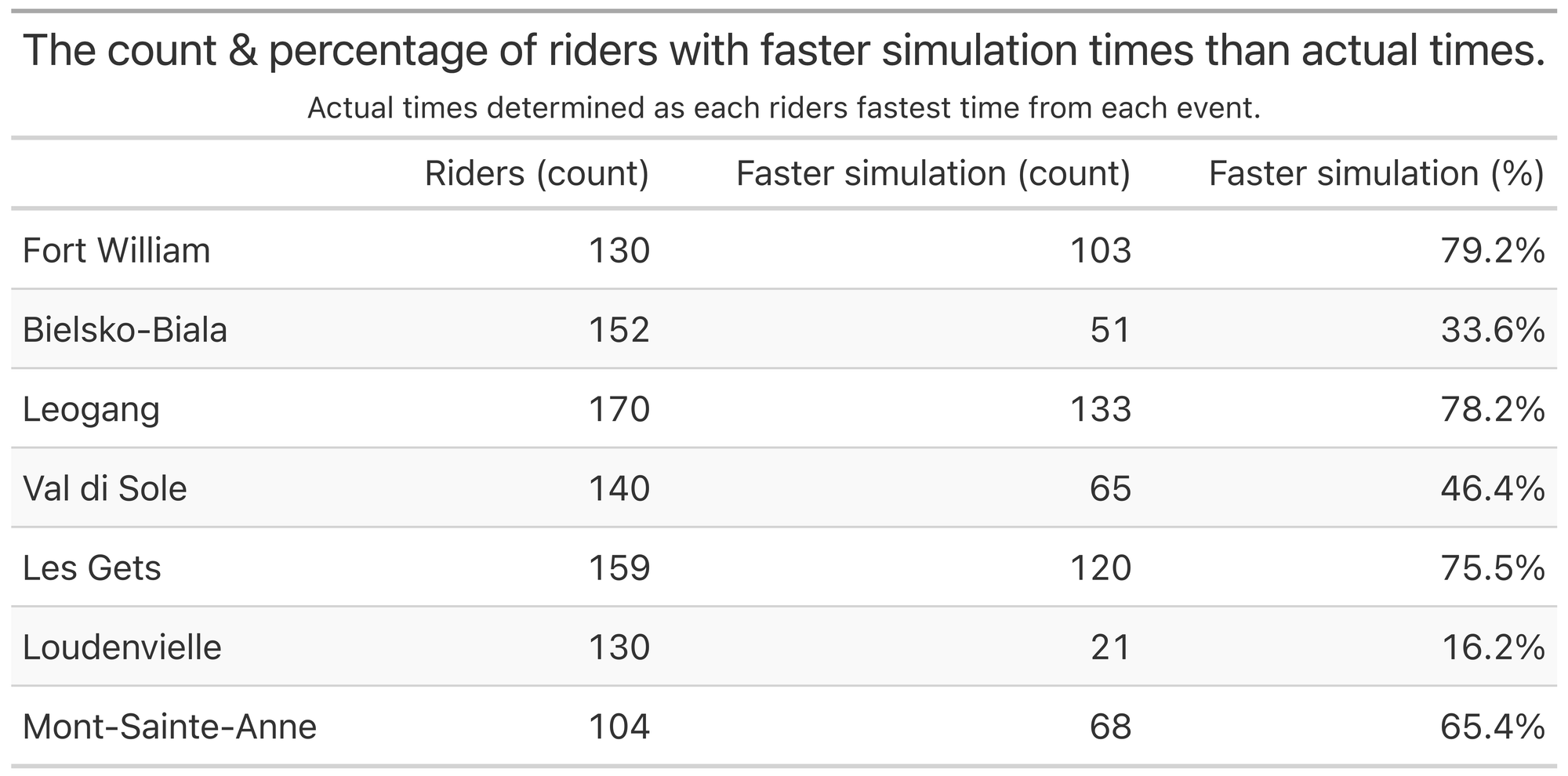
Some riders such as Danny Hart, left time on each track they competed on during the 2024 series:
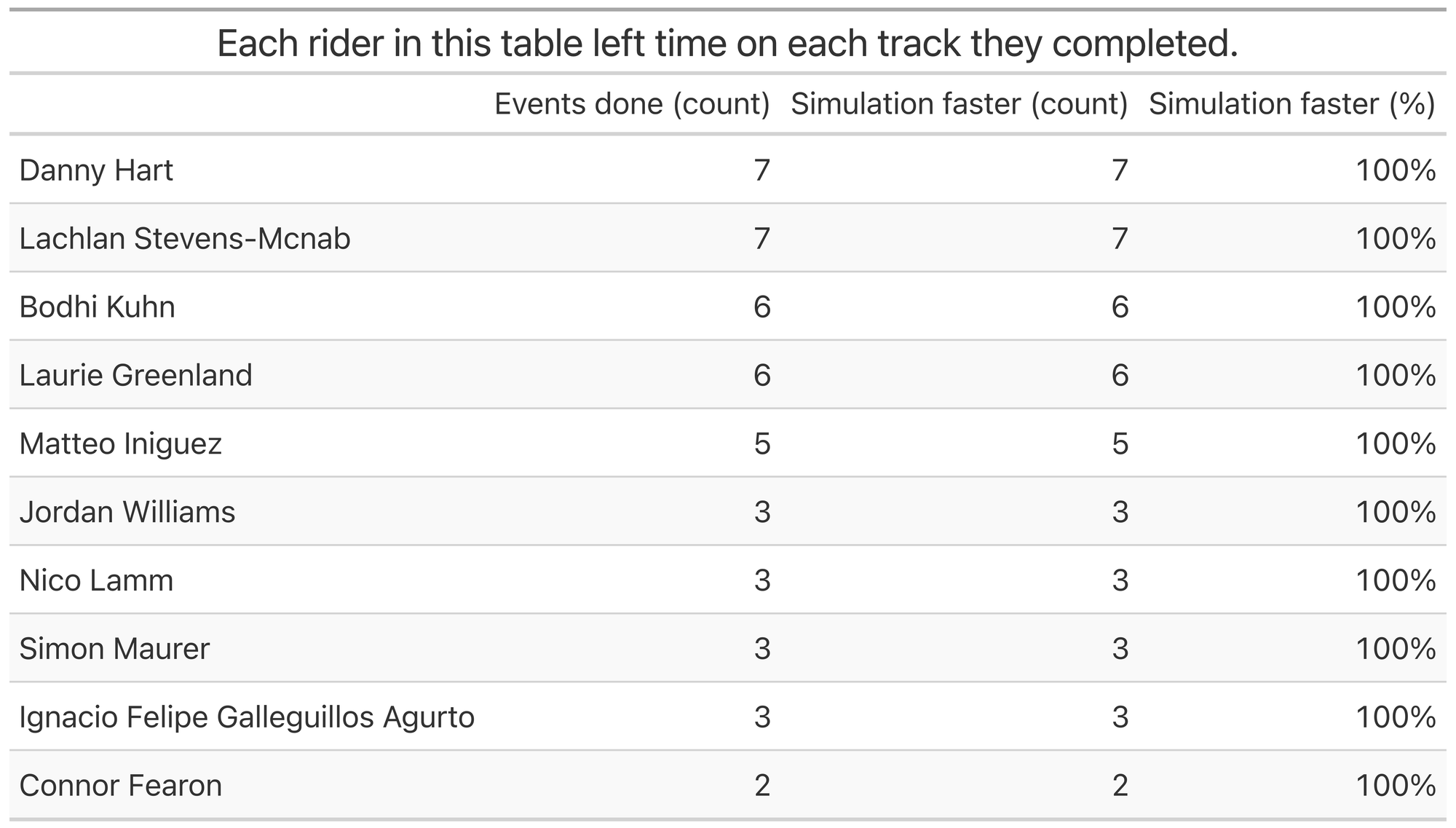
Overall season simulation
Just as we did for Luca’s race result in Les Gets, we can simulate each elite male rider's hypothetical fastest race run for each event in the 2024 World Cup series by combining their fastest splits from across each event. We can then generate a new overall leaderboard by rescoring these simulated runs using the scoring system used for finals:
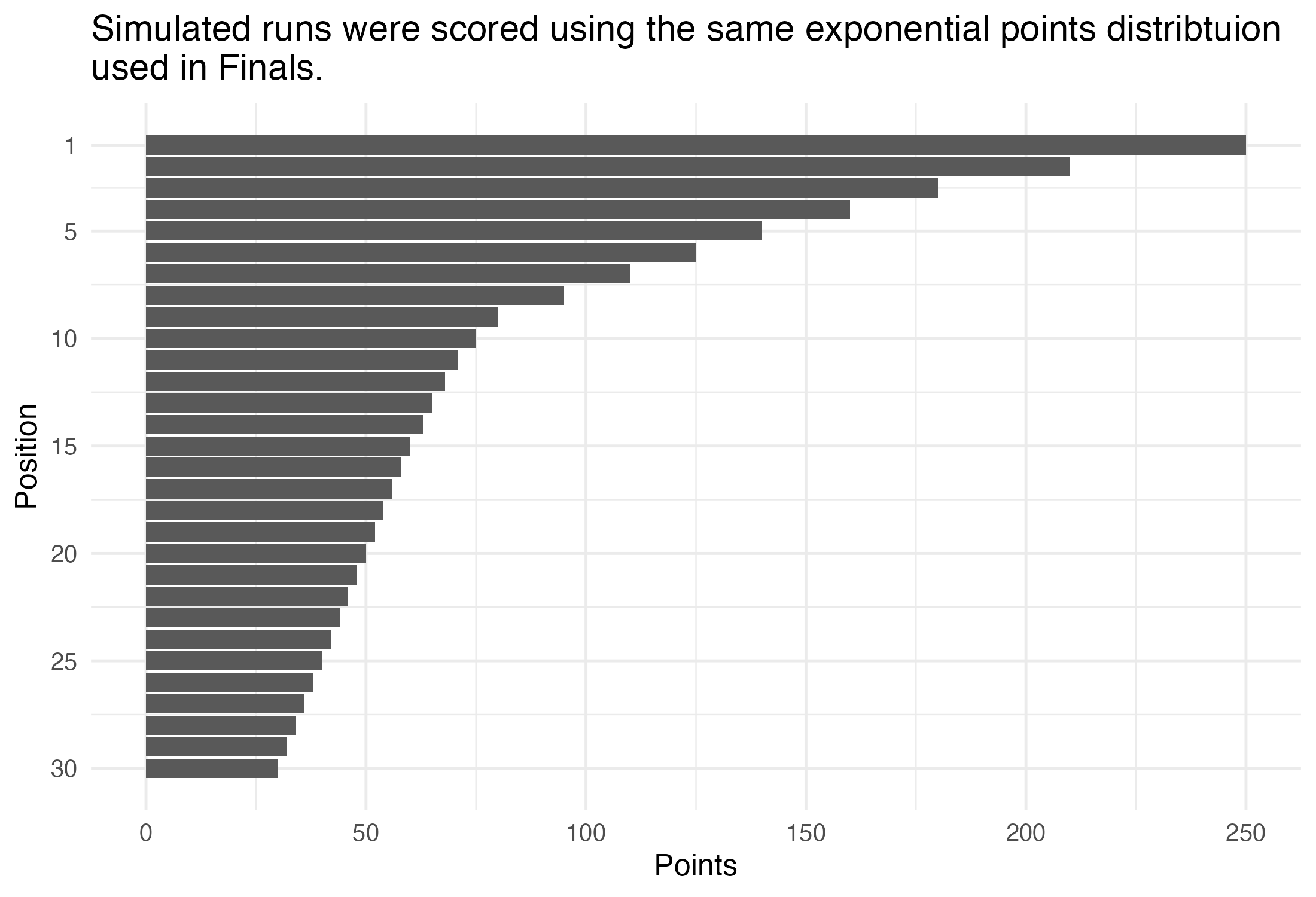
This exponential scoring system only scores the top 30 finishing riders at each event. Instead of spreading the points out linearly across each position, higher performance is rewarded with a greater distribution of the points. Let’s use this point system to see how the overall leaderboard would have changed for the top 10 elite men:
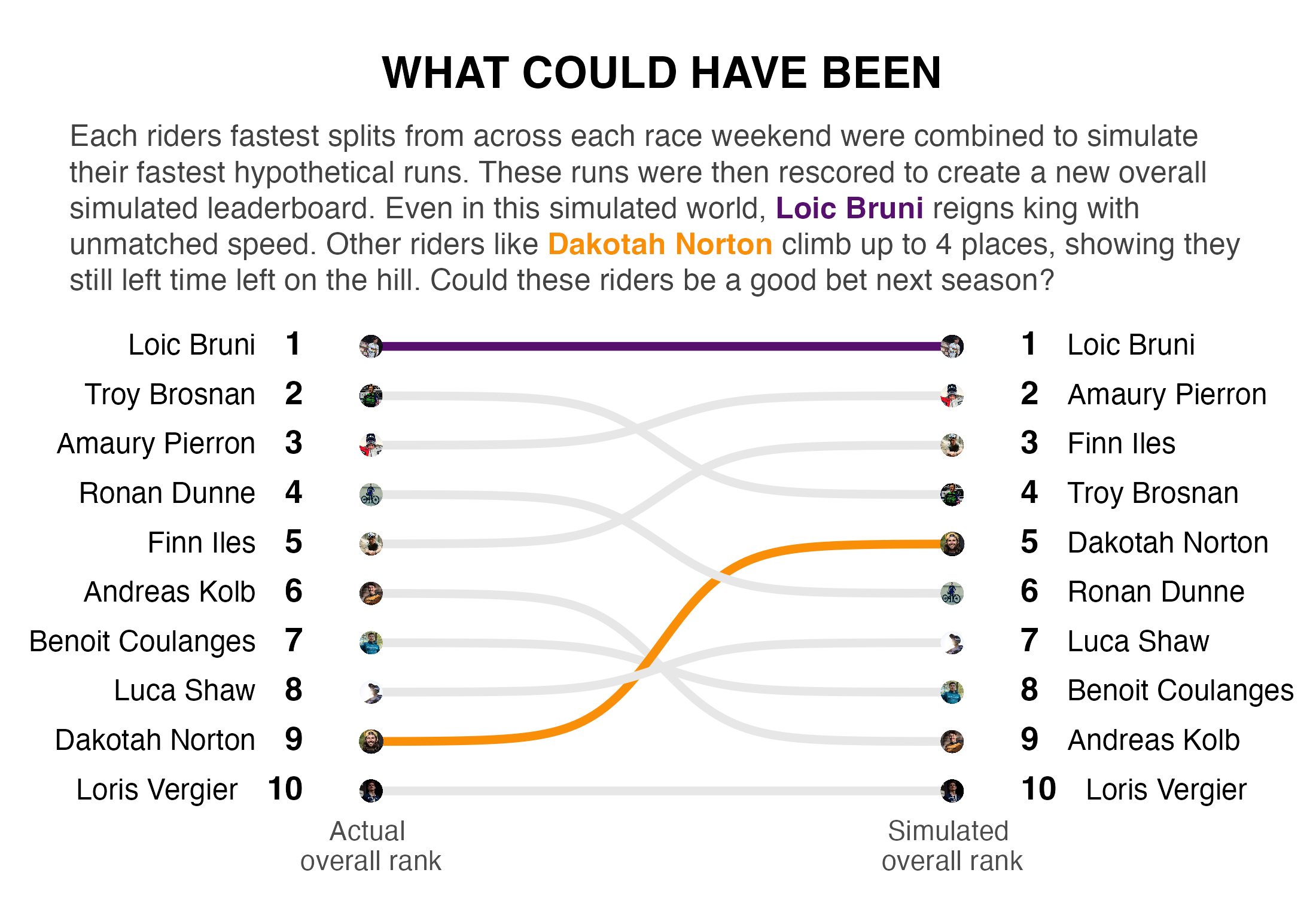
Some riders, such as Dakotah, bump up to 4 places in the leaderboard. This is unsurprising given how close he came to always grabbing the win (Les Gets we are looking at you!). Impressively, even in our simulated race league, Loic Bruni still reigns as champion. This shows that not only is he able to put it together on race day, but he truly has the fastest consistent raw speed of any rider out there.
We can also break the simulated overall leaderboard down by race too, to get a more detailed version of the story:
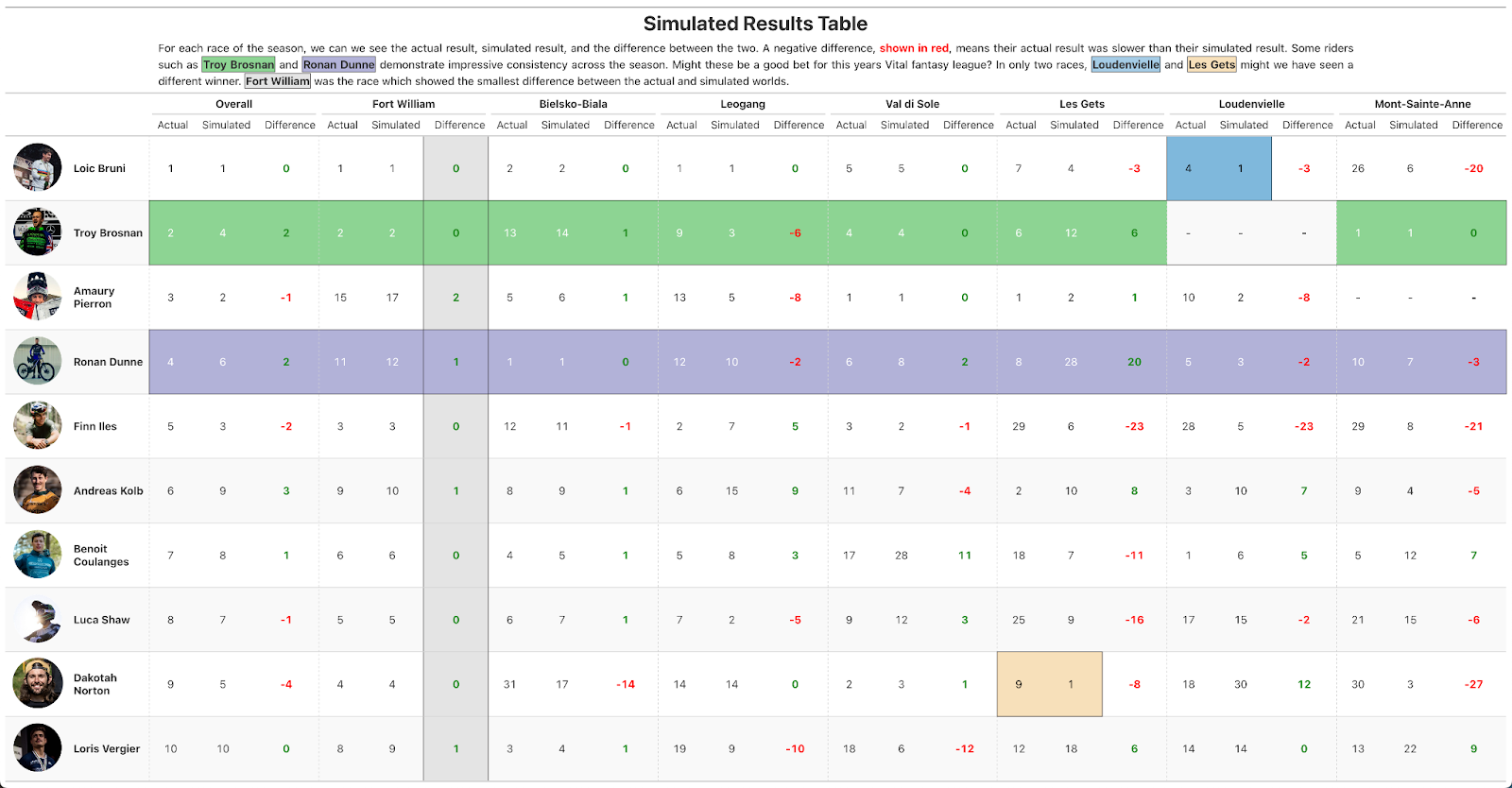
Only Les Gets and Loudenvielle offered a potential deviation from the established winners, with Dakotah Norton and Loic Bruni in contention. For the other races, the winner really was the fastest person showing speed at that event, not just the one able to put it together on race day.
We all know Troy for his impressive consistency, which he demonstrates again here by showing little deviation between his actual and simulated results. But, interestingly Ronan Dunne also demonstrates impressive consistency, transcending his image as just a wild man on the bike.
Event Breakdown
We can also break down the top 10 fastest simulated race runs by each split at each event. This not only allows us to see how the race could have played out, but more interestingly, which rider hit the fastest split at each race.
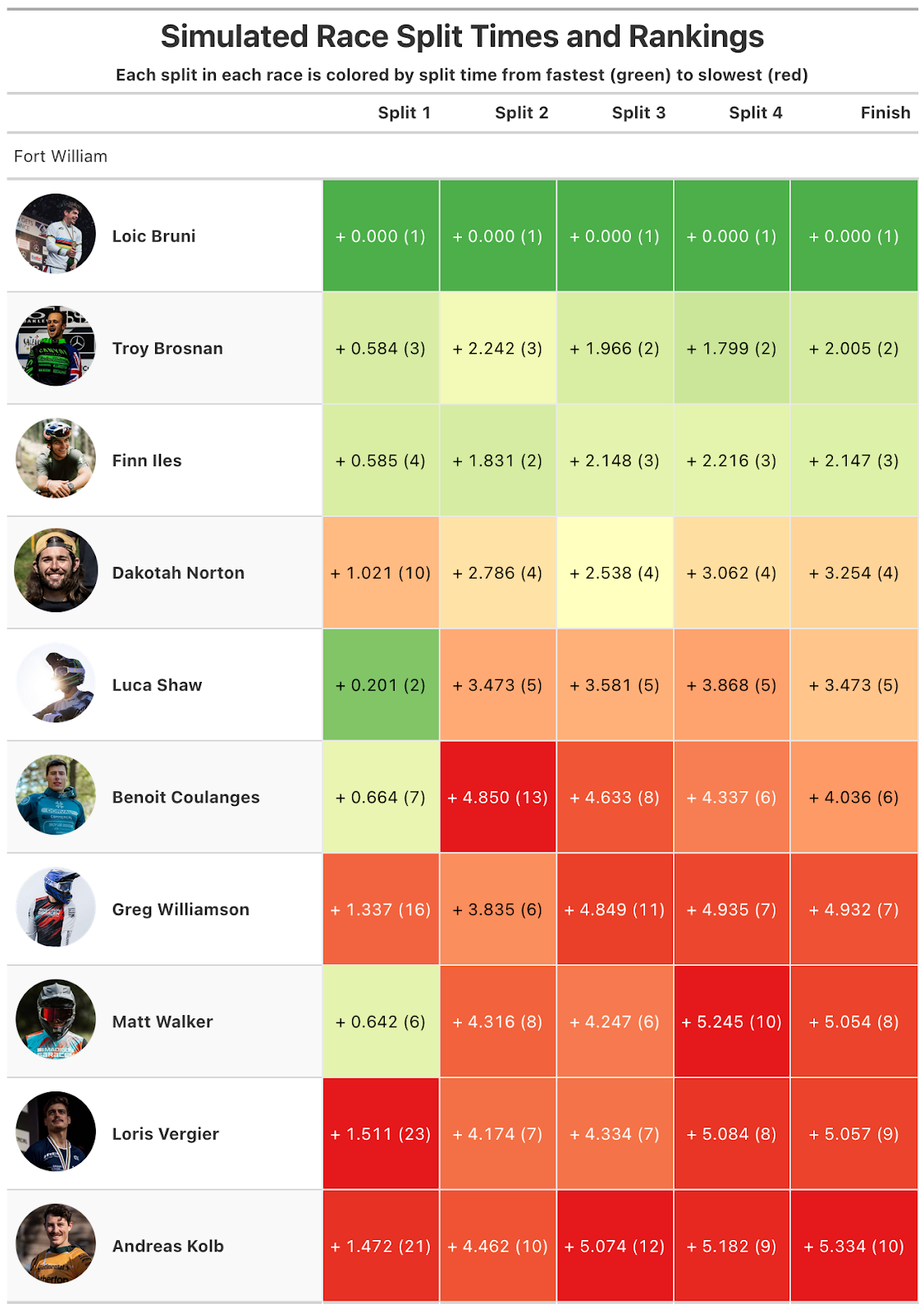
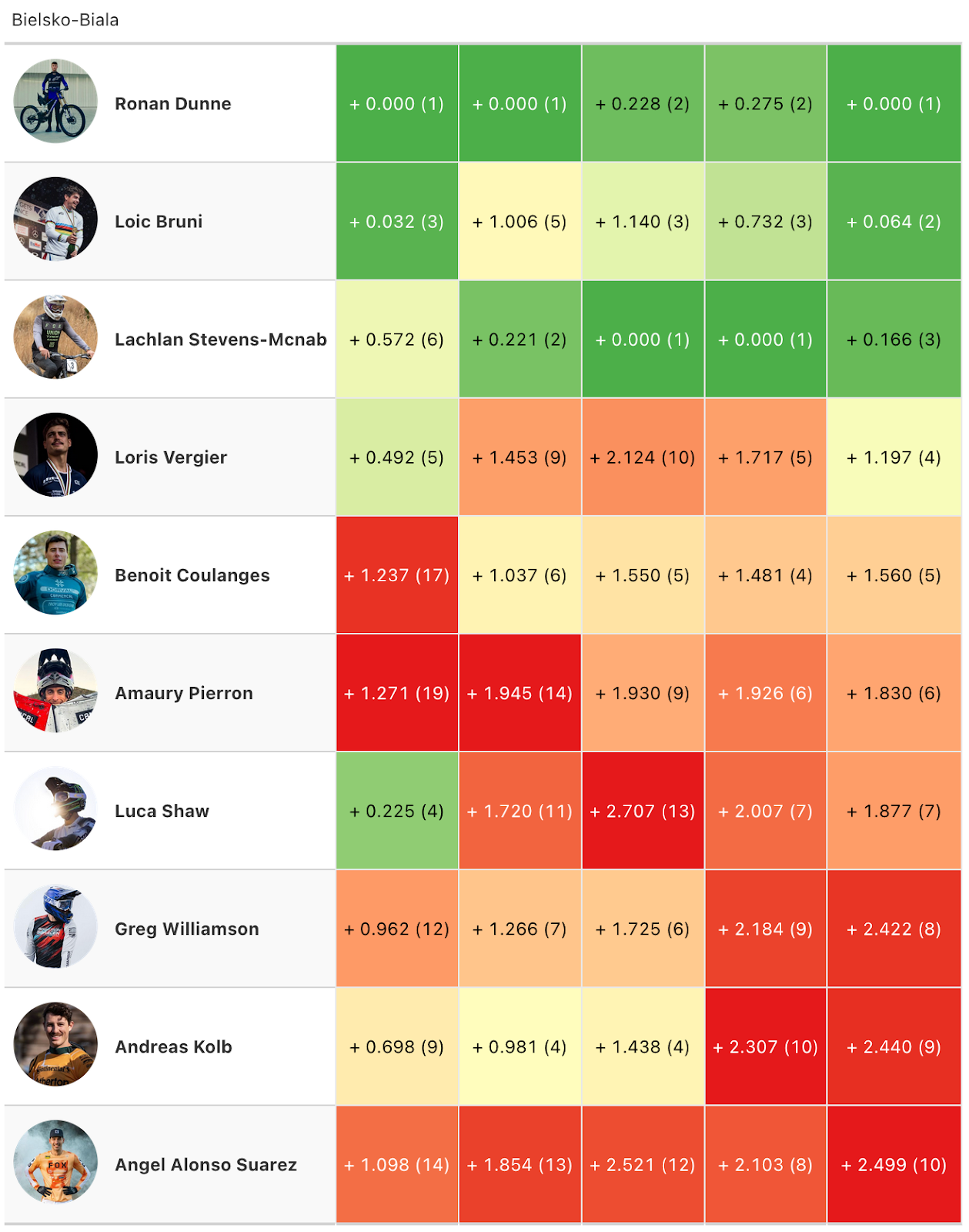
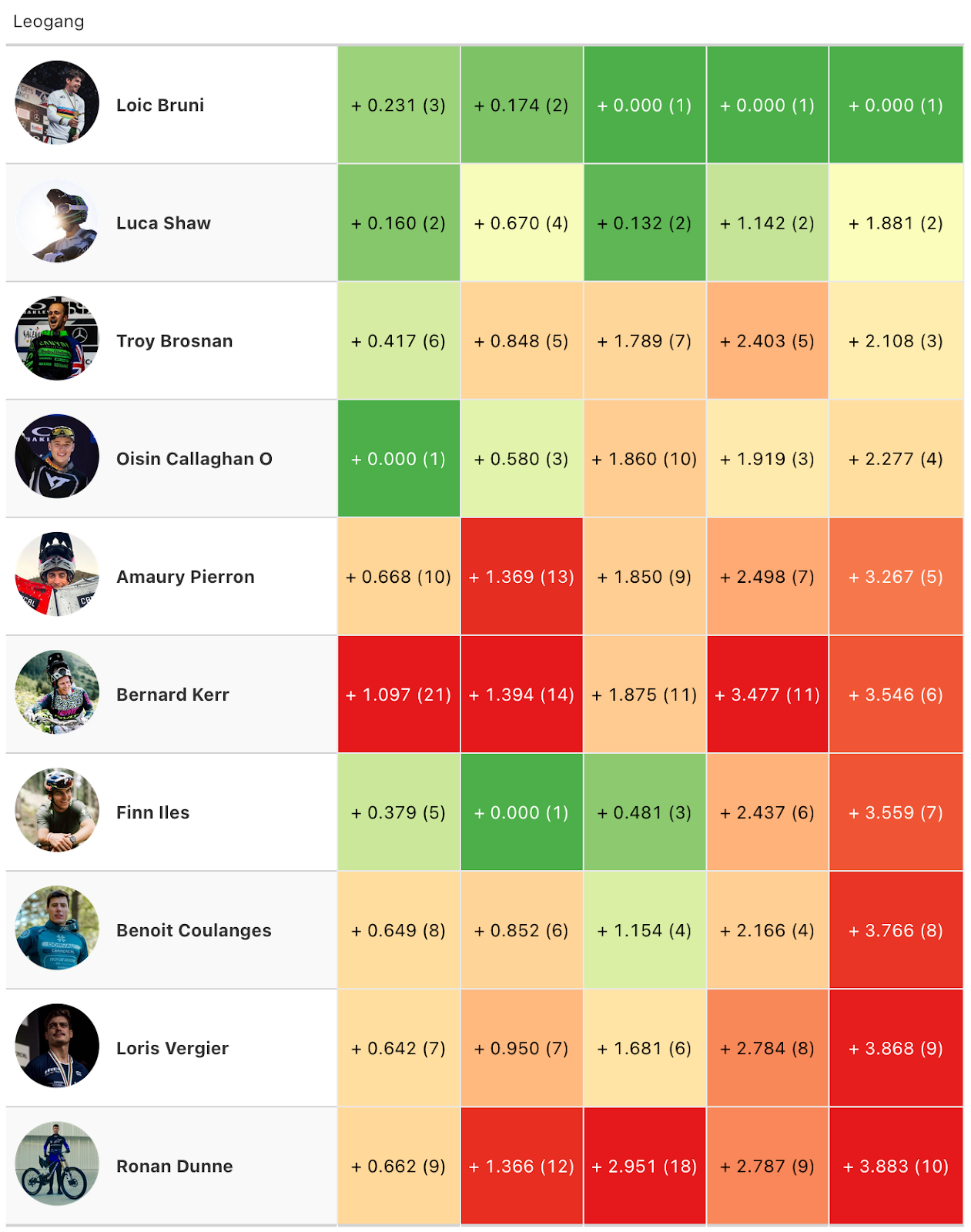
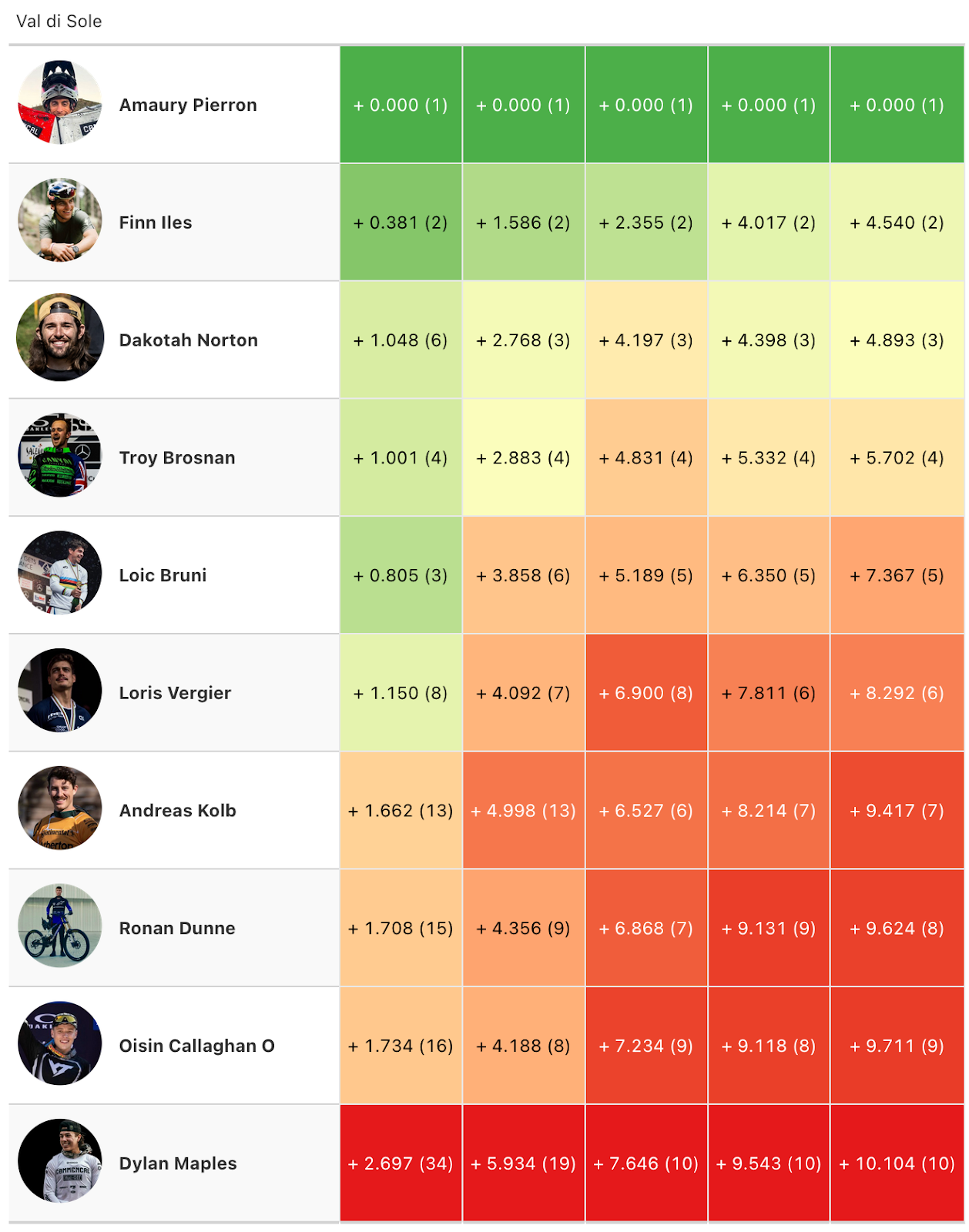
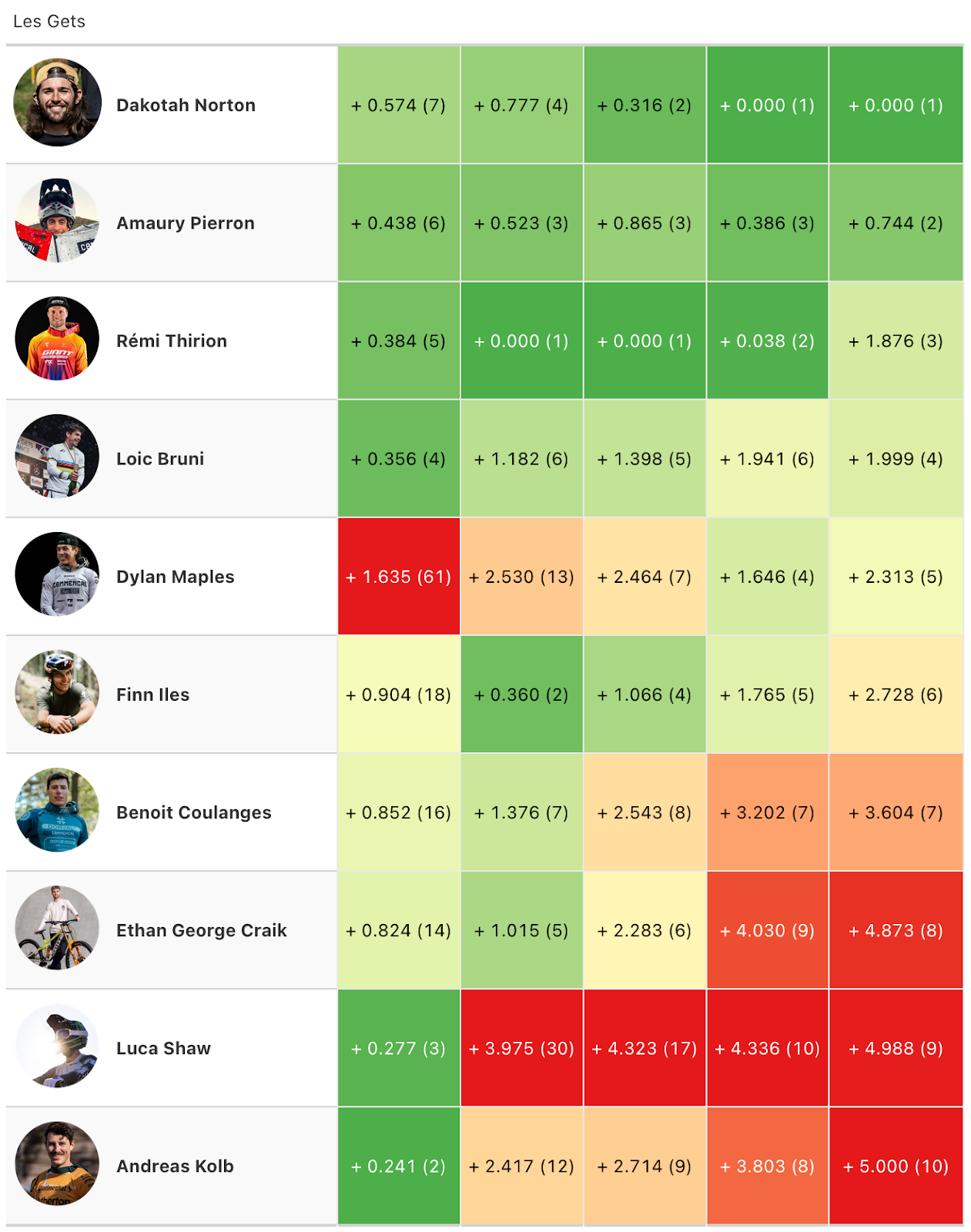
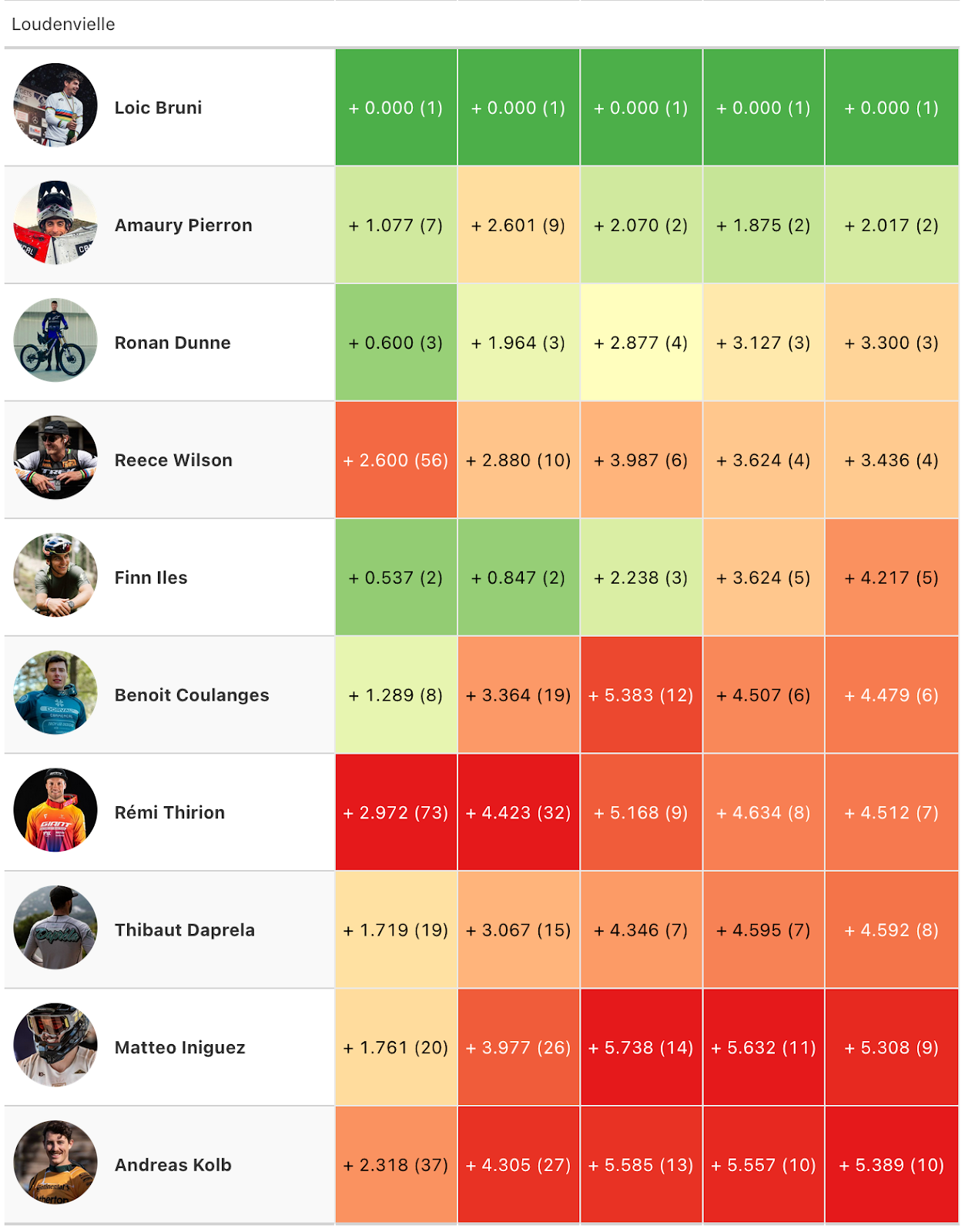
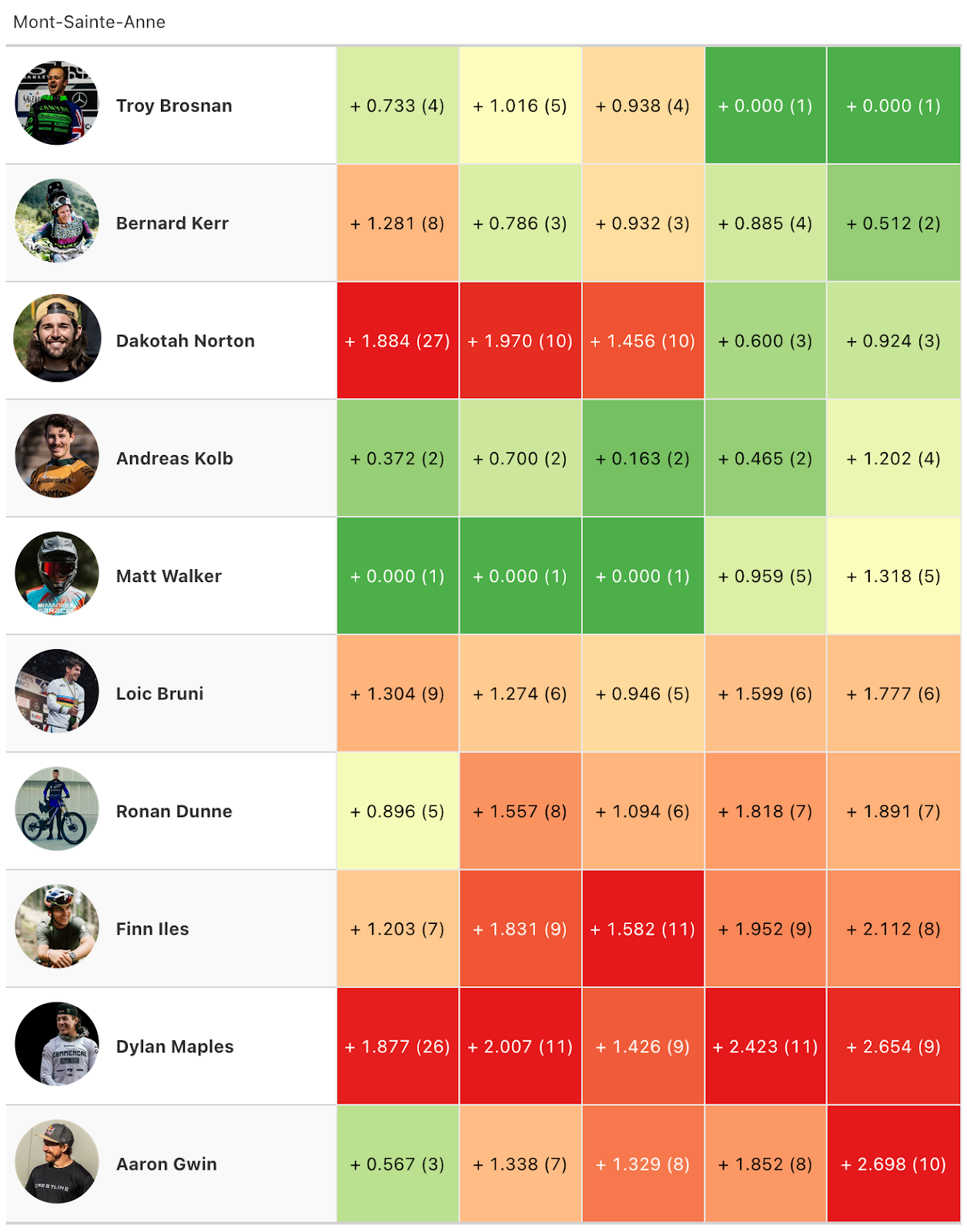
When did riders achieve their fastest splits?
As you might have expected, timed training doesn’t really reveal too much about what is to come during a race weekend. Infact, in Bielsko-Biala, Loudenvielle and Val di Sole, not a single rider performed their fastest split during timed training. For the rest of the events, on average only 3.8% of riders performed a fastest split during timed training (range: 0.6-10.3%).
The rest of the fastest splits were achieved during qualifying, semi-finals and finals. For every race other than Val di Sole, wet weather impacted Finals. Interestingly, in four of the races, Leogang, Les Gets, Loudenvielle, and Mont-Saint-Anne, the wet weather forced riders to slow down. In the other two races, Bielsko-Biala and Fort William, riders still sped up in finals despite the weather. Soil type, track conditions, and magnitude of rain probably explain these trends.
In Val di Sole, there was an absence of rain, yet, more riders saw faster split times in semi-finals than finals. Collectively, this data hints that semi-finals induce two things: more chance of rain in finals (due to later start times), and a degradation of performance into finals (likely due to fatigue and difficulty pacing two all-out race runs). The removal of semi-finals in the 2025 season will hopefully bring back more exciting racing as riders have more chance to continue upping their pace across an event, and a more level playing field come finals.
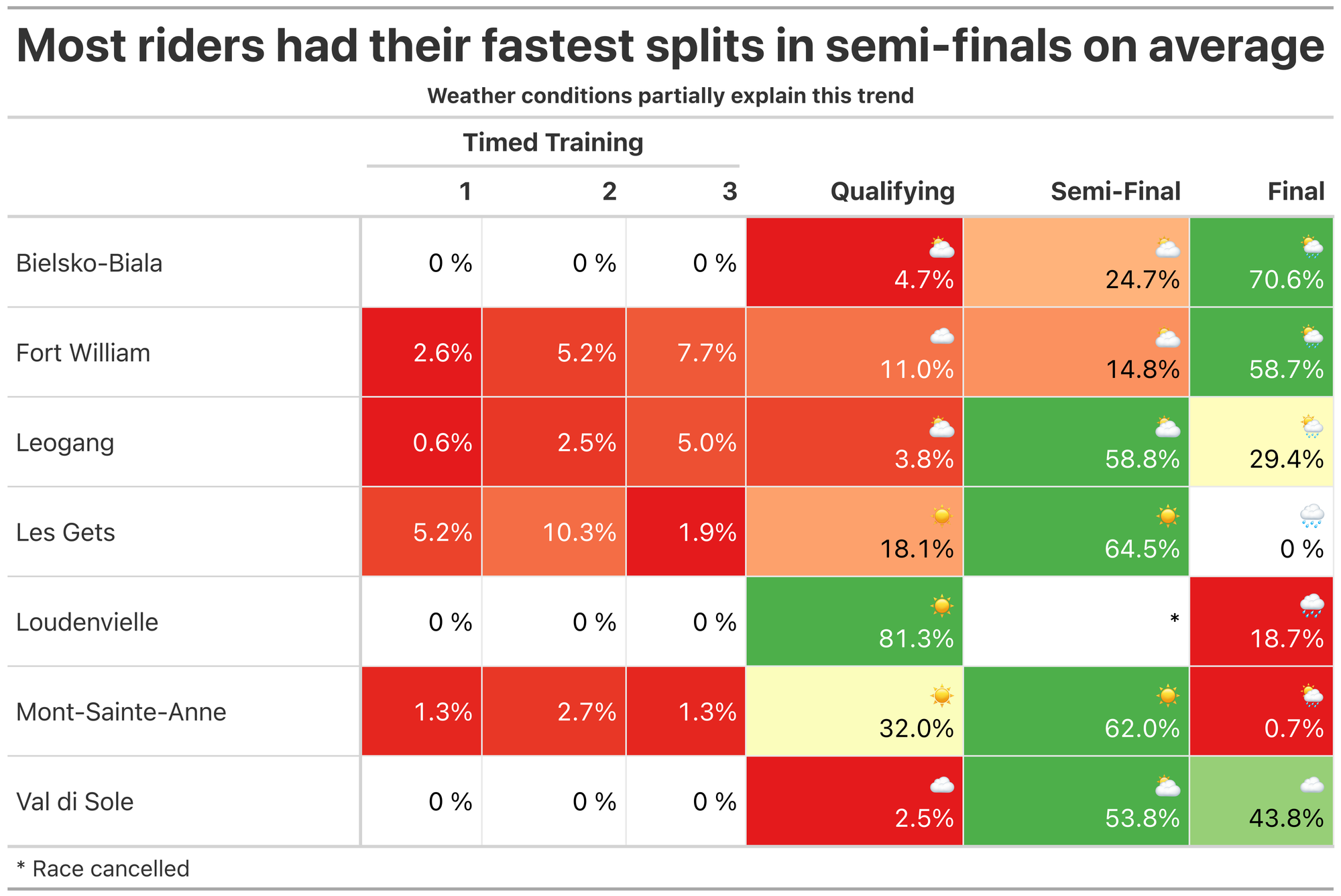
Conclusion
The simulation confirms Loic Bruni's 2024 dominance wasn't luck: he had both the raw speed and race-day execution to win. Meanwhile, riders like Dakotah Norton who jumped places in simulated standings have the pace but need consistency to convert potential into results.
The removal of semi-finals in 2025 could be a game-changer. Without the fatigue and weather variability that often slowed finals times, expect faster racing and potential shake-ups in the standings. Keep an eye on riders who showed fast splits but couldn't piece them together in 2024. The new format might be exactly what they need to breakthrough.